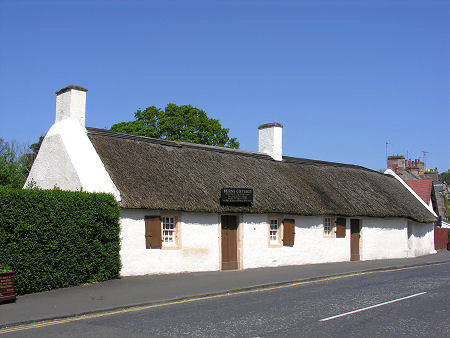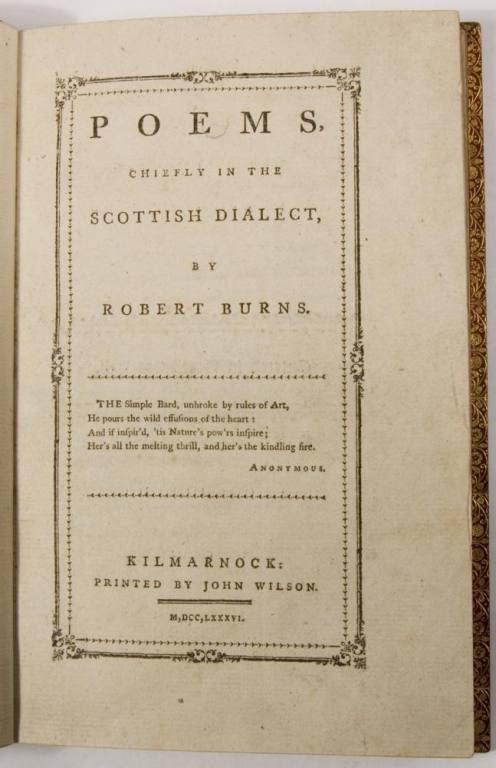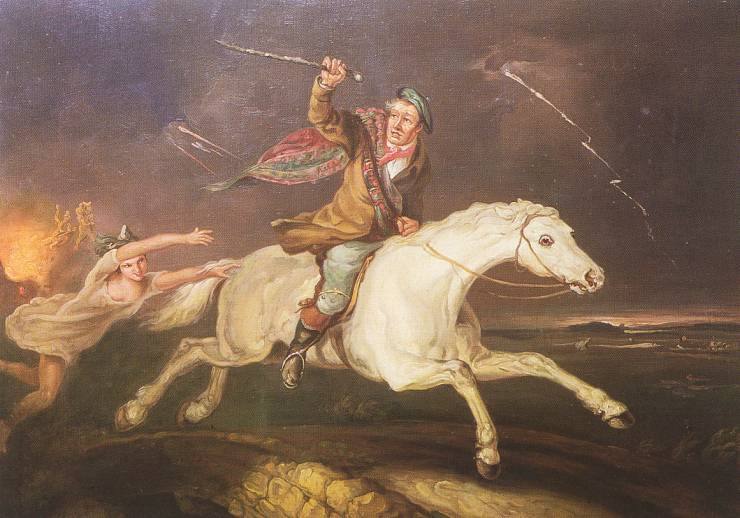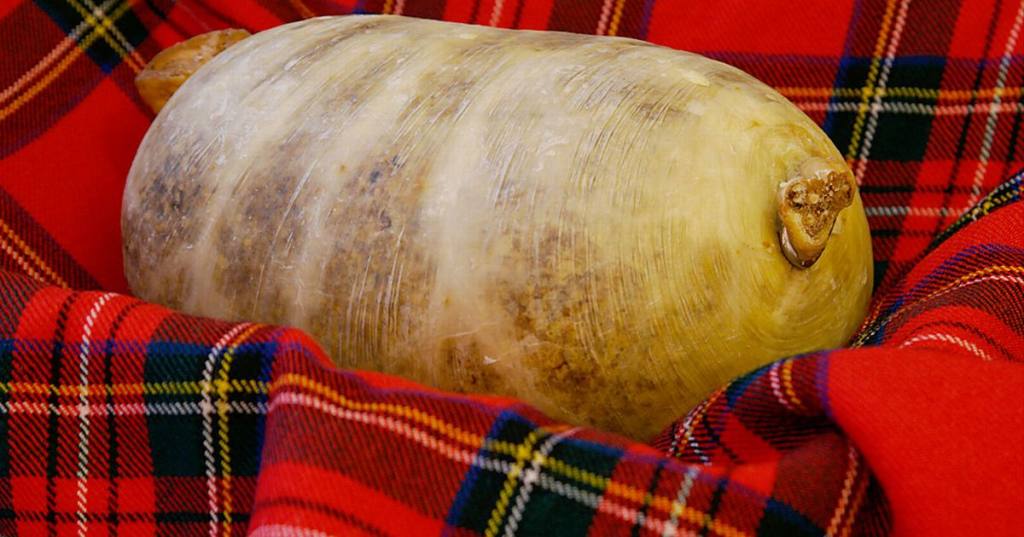Robert Burns is one of Scotland’s most important literary figures and is best known for his famous, and often humorous, songs and poetry. Burns was an inspiring and passionate pioneer of his generation and is regarded as Scotland’s National Bard.
| |
|  | More commonly known as Rabbie, Burns was born to a poor family in Alloway, Ayr, on 25 January 1759 and began his working life on the family farm. Burns’ father recognised the importance of education and hired a local teacher for Burns, who went on to demonstrate signs of an exceptional writing talent from a very young age.
|
| As Burns grew older, his great passion for Scotland and his dynamic, contemporary vision played an important role in inspiring the founders of socialism and liberalism. His literary fame began when his first work Poems, Chiefly in the Scottish Dialect, later known as the Kilmarnock Edition, was published in 1786 after which his writing career flourished.
Although Burns only lived to the age of 37, he enjoyed an eventful life and produced an astonishing amount of great literarey work during his career.
Burns is famous for his political views, revolutionary behaviour and his love for the lassies, all of which can be seen in his extensive catalogue of work. Burns was also inspired by the beauty of Scotland, particularly the breathtaking scenery of Ayrshire, his birthplace, and the romantic setting of his later home region of Dumfries & Galloway.
|  |
| | Robert Burns is famous for his brilliant poetry and songs, of which he wrote hundreds in both Scots and English during his short life. His unique and often radical style is what distinguishes him as Scotland’s National Bard and his work continues to influence Scottish literature to this day.
Burns was a keen traveller and he collected many Scottish folk songs along the way and adapted them using his own distinctive style. He is equally well-known for his thought-provoking and romantic work as he is for his more humorous poems.
There were hundreds of poems and songs written by Burns, but here are a few of his most famous works:
|
| Auld Lang Syne
Across the globe on Hogmanay (New Year’s Eve) people join hands and sing Auld Lang Syne at midnight as the poem encourages us to put the previous year behind us and look forward to the new year ahead.
Chorus:
For auld lang syne, my dear, For auld lang syne.
We'll tak a cup o' kindness yet, For auld lang syne.
|  |
|  | Tam O’ Shanter
Perhaps one of Burns’ most famous works, Tam O’ Shanter is an epic poem which tells the tale of a man who stayed too long in a pub and witnessed disturbing visions on his way home, like the witches described below.
It is a good example of Burns’ diversity as a writer as his sense of humour is clear in the poem.
Warlocks and witches in a dance:
Nae cotillon, brent new frae France,
But hornpipes, jigs, strathspeys, and reels,
Put life and mettle in their heels.
|
| Address to a Haggis
Burns’ ode to Scotland’s famous dish, Address to a Haggis, is a well-known poem that is dramatically recited at Burns Suppers on 25 January every year.
Fair fa' your honest, sonsie face,
Great chieftain o' the pudding-race!
|  |
|  | A Red, Red Rose
Burns spent the final years of his life working to preserve traditional Scottish songs for the future and A Red, Red Rose is one of them. The simple yet timeless lyrics of the song describe a love that does not lessen with the passage of time.
O my Luve's like a red, red rose,
That's newly sprung in June:
O my Luve's like the melodie,
That's sweetly play'd in tune.
|
| | | Key milestones/significant events in Burns’ life
- 25 January 1759 - Robert Burns born to William Burnes and Agnes Broun in Ayr (Robert Burns spells his surname Burnes until 1786)
- 1765 – James Murdoch becomes Burns’ tutor
- 1784 – Following his father’s death, Burns moves his family to Mauchline where he meets his future wife, Jean Armour
- 1786 – Burns becomes a father, moves to Edinburgh and on 31 July his first work, Poems, Chiefly in the Scottish Dialect, is published
- 1787 – The Edinburgh Edition of Poems, Chiefly in the Scottish Dialect is printed and later that year the Dublin edition and first London editions are printed
- 1788 – Burns, Jean and their family move to Ellisland Farm where Burns writes one of his most famous works, Auld Lang Syne
- 1791 – Burns and his family move to a house on Bank Street (now Burns Street) in Dumfries – a region which provides the poet with much inspiration
- 1796 - In rapidly deteriorating health, Burns dies prematurely on 21 July in Dumfries at the age of only 37
|
| | Although more than 200 years have passed since his death, Burns remains one of the most celebrated figures in Scottish history and culture, demonstrated by the annual Burns Night celebrations held across the world on 25 January each year | |
| | Adapted from information provided by www.visitscotland.com |
|
| |
 |
|
